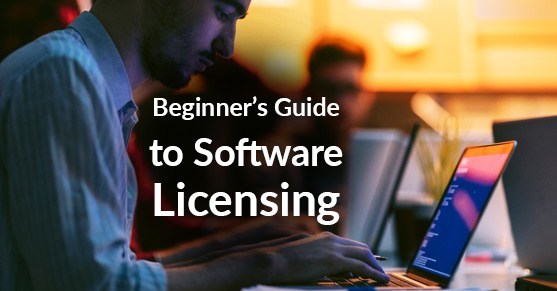Software licensing is a dense subject, and it can be hard to fully envelop yourself in the intricacies of the various license agreements your organization has. However, just knowing the basics will give you a better idea of how to manage your software licenses, optimize them for your business, and always be prepared for an audit. So, here’s a little introduction to answer a few vital questions about the most basic, but important parts of software licensing.
What is a Software License?
Software licenses are an integral part of a company’s software assets, which provide a level of legality to manage software installation and usage for a given product. More than likely, you’ve read a license agreement more than a dozen times when you’ve updated your mobile device. Any software purchase, whether it’s commercial or personal, is accompanied by a dense license outlining what the software can be used for, how it should be used, and who should be using it. In other words, it acts as a contract between a software manufacturer and a customer describing what a company can and can’t do.
In general, there are commonalities between licenses no matter who the manufacturer is: How can the software be installed, used, and distributed? Can the usage license be modified? Who gets access to the source code? These are questions answered in all software licenses. However, not all licenses are the same, and the contents of IBM licenses will be different from the license agreement of Microsoft products.
What is the difference between open-source and proprietary licenses?
First, it’s essential to know the difference between “open-source” and proprietary (or “closed-source”) software. Where open-source software licenses have limited restrictions when it comes to installation and usage; however, the limitations that accompany proprietary licenses are far more stringent. Open-source software can be downloaded as many times as the user wants, on numerous devices, and can be redistributed without repercussion.
What is an End-User License Agreement (EULA)?
Second, proprietary software will always come with an End-User License Agreement (EULA), which describes everything you can do with the software. It shows users how many copies can be installed, any auxiliary software your machines may need to operate the software, secondary/home use rights, and what data the manufacturer can collect about you and how they can use it. In line with that, actively observing your license term is a best practice for term licenses (this doesn’t apply to perpetual licenses, which never expire); once they expire, be sure to re-up.
What should I know about installation/activation?
In most cases, installing and activating your new software is pretty easy, and most licenses offer step-by-step instructions on proper installation. Although installation/activation is generally the same from product to product, it’s always a good idea to keep the instructions close at hand. Another crucial piece of software licenses to understand is the license key during activation. Although not all software involves a license key, most proprietary software will have a license key to help the vendor monitor the user’s account for compliance reasons. The license key is typically a long strand of letters and numbers entered during the activation process to get full access to the product’s features.
We also understand that usage changes, and so does preference, which is why we suggest you familiarize yourself with the deactivation/transfer protocol provided in the agreement. Having a plan for deactivation and computer transfer of products will help you save money and protect yourself from non-compliance.
What about license documentation?
Third, maintaining up-to-date and accurate documentation for every license instance can save you tons of time and resources. The product name, version number, installation disks, manuals, serial number (SKU), proof of purchase, license key, etc. are fundamental forms of license documentation and you’ll be glad you concisely maintained them.
How do I handle license compliance?
As one of the most vital aspects of your software management, license compliance is something we can’t stress enough. Audits are fun for no one, and the hidden costs are tenfold. It’s important not only to show your vendors that you care about compliance but also reflect back to your customers that you care about operating an honest company. Everything we’ve discussed in this blog plays a significant role in license compliance; however, it’s just the tip of the iceberg for proper license management. For more information on license compliance, read our blogs, which explore the topic in great detail.
Ask the Software Licensing Pros
Whether you have questions about general software license information or a question requiring detailed problem-solving, the experts at XTIVIA have the answers. For more than a decade, we’ve been providing outstanding software license solutions for every situation you can think of. If it’s software licensing, we’re your go-to professionals.
If your organization needs help with its software licenses, don’t hesitate to reach out to us via the comment section below or contact us here.

